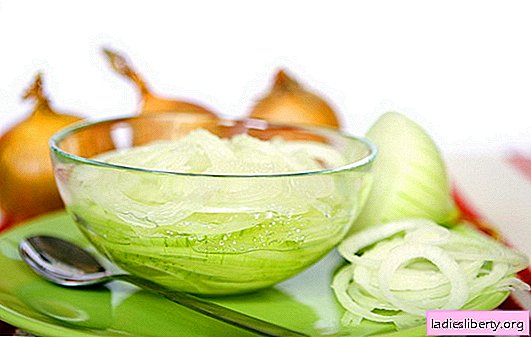
Gerbera belongs to perennial plants of the aster family.
Its appearance resembles a large dandelion, due to the leaves collected in the rosette.
Single gerbera flowers are more like chamomiles. There are plants with small and large inflorescences, which depends on the variety.
Terry varieties resemble aster. Gerbera is grown in greenhouses, like cut plants.
Many flower growers are convinced that it is very difficult to breed a gerbera at room conditions, but this is not entirely true. With the right approach to growing and caring, the beautiful gerbera will sparkle with paints at home.
We grow a gerbera at home
To start breeding gerberas in the room you need to knowingly. First, plant varieties are selected that are able to tolerate a home microclimate well. Indoor dwarf varieties are grown, the height of which does not exceed 25 cm. The beauty not always bought in the store will remain compact. The thing is that in industrial cultivation, plants are treated with growth inhibitors, when the effect of the preparations ends with the gerbera begins to increase in size. Sometimes from a compact bush a tall plant can turn out. So it’s useful to know some names of varieties and their varieties.
After the acquisition, the plant needs proper care and special conditions.
Where to place the gerbera pot
Do not forget that gerbera is a greenhouse plant. It does not tolerate direct sunlight and high temperatures. To grow a gerbera at home, you need to allocate a well-lit place without drafts and nighttime temperature drops. It is best to place the flower pot in the eastern or western room. In the summer, you can expose the plant to fresh air, a glazed loggia from the western side is suitable.
Growing Temperature
In a room where there is a gerbera, it should not be stuffy and too hot. The ideal temperature is up to 22 degrees. Even in the open ground in summer heat, the gerbera does not bloom.
During the dormant period, which begins in late autumn and lasts all winter, the pot with the plant must be placed in a cooler room, where the temperature is maintained at the level of 14-16 degrees.
Air humidity
Gerbera is undemanding to air humidity, but in a hot period spraying leaves will be superfluous.
During dormancy, high air humidity leads to plant diseases. Therefore, spraying is rarely carried out, if the plant is in close proximity to heating appliances.
How to care for gerbera in a room
With proper care, a gerbera can bloom several times a year. To do this, you must follow simple rules.
Watering mode
Gerbera refers to hygrophilous plants, so watering should be frequent, but moderate. The soil should dry out between treatments. Do not allow stagnation of water at the roots and drying out of the soil. The ideal option for watering is through the pan when excess water is drained.
Water for irrigation should be at room temperature, but not cold. Excessive watering with cold water leads to the death of the flower.
During dormancy, the frequency of watering is reduced. The previous regime is returned only with the advent of spring, when the plant is actively increasing leaf mass.
Additional plant nutrition
Fertilizing and fertilizing for gerberas is done with caution, although the flower is responsive to them. It is impossible to apply organic fertilizers, since the plant tolerates them with difficulty. Gerbera is fed as follows:
• At the beginning of the growing season, the plant is fertilized with full nitrogen complexes. Once the plant has gained enough leaf mass, they switch to fertilizers with a large dose of potassium.
• As a top dressing, use full-fledged mineral complexes for flowering plants.
• The frequency of fertilizer application is once a month.
Important! Everything is good in moderation! It is impossible to zeal with watering and top dressing. This leads to plant diseases, and does not bring flowering closer.
When to transplant a gerbera (photo)
When caring for a room gerbera, do not forget about the transplant. But it must be carried out according to all the rules.
1. Remember that a newly acquired plant is not transplanted for two weeks. This is the period when adaptation to new conditions and climates takes place. Transplanting during this period will only harm the flower.
2. After forced quarantine, a transplant is necessary. The soil in which the plant was transported is unsuitable for further breeding.
3. The composition of the soil for the cultivation of gerbera should include sheet land, peat and sand. Experienced gardeners add hydrogel granules to it, which prevent the soil from drying out.
4. Subsequent transplants are carried out as the plant grows, when the root system has grown sufficiently.
5. The optimal time for a plant transplant is a dormant period. The pot is selected a few centimeters more than the previous one.

How to propagate a gerbera at home (photo)
Sooner or later, every grower is faced with the need to get a new plant instance. Gerbera propagates not only by seed, but also by dividing the bush.

By dividing, you can get several new plants at the same time. This method is good because the mother bush after division comes to life, enters into the second "youth" and continues to actively grow and bloom. You need to practice dividing the bush during the dormant period, when the flowering is over, it is better in late summer or early autumn. The old bush is pulled out and cut with a sharp tool into several parts. Each new plant is placed in a separate pot, where it will take root over the next six months. Next spring, the resulting plants will bloom.
The seed method is rarely used, since not always received seedlings retain maternal characteristics. Gerbera seed germination is low. Only fresh seed is used for planting, which is not always available. The supplier of store seeds cannot fully guarantee their quality. These points need to be paid special attention if there is a desire to grow a gerbera from seeds.
Problems With Gerbera Growing
In caring for a gerbera, you need to listen to the opinions of specialists and experienced gardeners, this will make it possible to grow a healthy plant at home. Often, beginners in this business experience certain difficulties that are easy to eliminate.
1. Gerbera has stopped growing, although grown in a lighted room.
Gerbera daylight hours are up to 12 hours. If there is too much light, then the plant stops growing and does not produce flowers. It is noted that the most magnificent flowering of gerbera occurs in the period from August to November. Does the plant stop developing? Reduce daylight hours.
2. Gerbera does not bloom, daylight hours are normal.
The gerbera dormancy period lasts up to three months, when the plant gains strength and is restored. If the flowers do not appear much longer, then you can judge about the disease. Inspect the plant carefully.
3. Gerbera is healthy, the growing conditions are not violated, but the plant does not bloom.
Another reason for the lack of flowering is a too large pot. As a result, all forces go to root, and the appearance of buds is delayed. In this case, transplantation of the plant into the appropriate pot is required.
4. Gerbera develops well, grows leaves, but does not bloom.
Frequent use of nitrogen-containing fertilizers leads to riot of leaves at the expense of flowering. It is required to stop the application of nitrogen fertilizers, transfer the flower to potash fertilizing.











